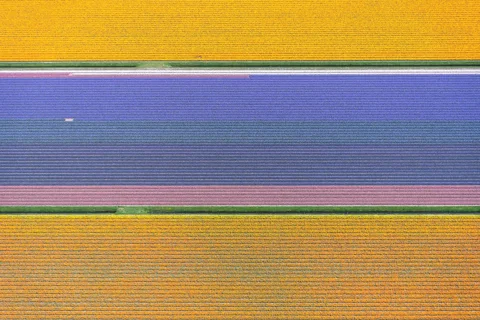The investment world uses many familiar and less familiar terms, such as stocks, bonds, options and swaps. In a special series, we explain the various asset categories. In this episode, Gaston Siegelaer, Senior Investment Specialist at APG, discusses investment funds.
The investment fund in a nutshell
What is it?
An investment fund is a collective investment, a basket of different stocks and/or bonds, for example. Investment funds have become wildly popular with private investors over the past 20 years. An investment fund must comply with strict and transparent rules.
When did it start?
The very first investment fund was established in Amsterdam in 1774 and bore the name “Eendragt maakt Magt” (Unity Creates Power).
What else is involved?
There are hundreds of mutual funds; the range is very diverse. The distinction between active and passive management is important.
What is it?
An investment fund is a collective investment. Participants all put in money, which the fund provider uses to buy investments such as stocks, bonds and/or other securities.
Investment funds come in many shapes and sizes. They can be distinguished according to investment category: stocks, bonds, real estate, commodities and money market. Or a combination of categories: then it is called multi-asset. Within the categories there are again plenty of choices such as sustainability or region. “With many tens of thousands of funds worldwide, the choice is vast,” Siegelaer tells us. “There is a myriad of providers, including mainstream banks, insurers and other financial service providers. Getting in online is easy, but it is advisable to make an informed choice. Basically, investment funds spread the risks in an investment portfolio because there are different securities in the basket. But the risk profiles may well differ. After all, investing always involves risk. Bonds, for example, are generally less risky than stocks. If there is a chance of high returns, there is also a greater chance of loss.”
Varying costs
The fees charged by providers are also a factor in choosing. “Due to competition and supply, management fees have dropped significantly in recent years. The management fee for a passively managed global diversified equity fund is around 0.15 percent; Decades ago that was four times as much. Still, there are funds that focus on specific themes and charge around 0.5 percent or more in management fees.”
The third choice factor is the basket itself. What’s in it; is there a particular selection? “For example, you can invest in an equity fund that invests in all the major, publicly traded companies in the world, so then you’re also investing in tobacco companies and companies that don’t recognize workers’ rights, just to name a few. In recent years, however, we have seen ESG criteria become more important; ESG stands for Environment, Social, Governance. Investors and pension funds want to invest in companies that take into account the environment, working conditions and responsible governance. That is why there are investment funds that do not have shares in, for example, arms manufacturers or producers of fossil energy. Or in companies that evade taxes or use child labor. Conversely, funds that, instead, invest in companies in sustainable sectors and high-tech are popular now.”
Expert and rules
But an investor could figure that out for himself too, right? “They could,” Siegelaer says, “but that is precisely the great advantage of an investment fund. The manager knows the market and figures out which stocks and/or bonds belong in a basket and which do not, and is an expert who also knows the performance of the companies, based on many sources of information. Including about the sustainable performance of companies, to prevent greenwashing. An expert invests your money in that basket of different companies and does so with knowledge and information you would not be able to gather yourself. Plus, investment funds must comply with strict rules and be completely transparent in terms of risks, costs and the manager's freedom of policy. This is all stipulated in the prospectus.”
When did it start?
Investment funds were “invented” in eighteenth-century Amsterdam. The very first fund, called “Eendragt maakt Magt” (Unity Creates Power), was established in Amsterdam in 1774 by the wealthy merchant/broker Abraham van Ketwich (1743-1809). Van Ketwich offered investors of limited means the opportunity to invest in bonds. These were issued by banks and governments in countries including Austria, Denmark and Russia, for participation in plantation loans in the West Indies.
What else is involved?
The distinction between an active and passive management style is important. Siegelaer: “We speak of an active management style when the fund manager tries to beat the market, or in other words to achieve more return than the market itself. This requires active trading and anticipating price changes, with all the associated risks. A passive management style means that the fund follows the market."



